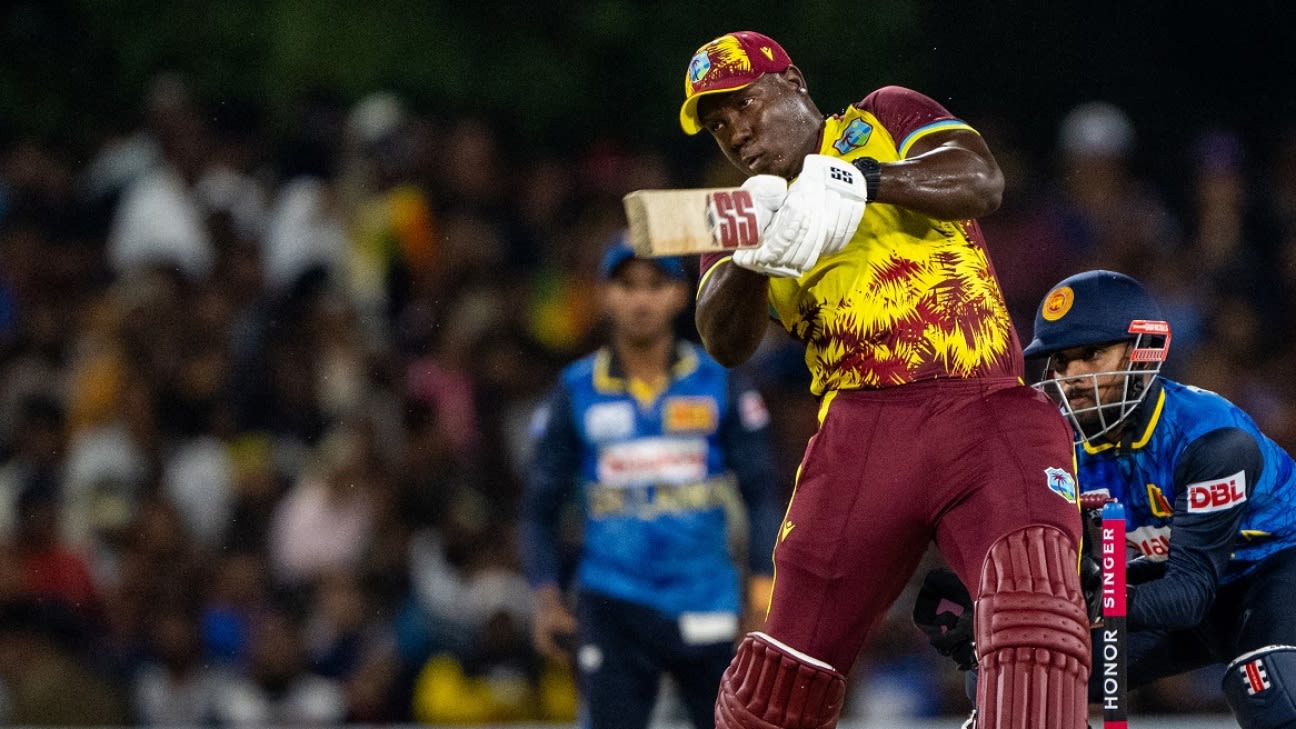In a fairly scathing assessment, Sammy argued that while the next T20 World Cup – in 2026 – was going to be co-hosted by Sri Lanka, such turning tracks would not be the norm with the ICC having primary input over the curation of the wickets.
“So I told the guys, ‘yes, when the World Cup comes we won’t get these conditions – the ICC will make sure the pitches are good’. So it was a moral victory for us from the first game to the second game.”
“Sri Lanka’s strength has always been spin, and we still believe that it’s with spin that we will be able to win the most,” he said following Sri Lanka’s win in the third T20I. “So we made pitches to support that strength. When that’s working for us, I think it’s a lot easier for us to win.”
“When you have pacers, like the two slingers (Nuwan Thushara and Matheesha Pathirana) not getting an opportunity to bowl on good wickets, when the true test comes that’s where you really test your team.
“I mean, there’s home advantage, but what good does that make for the development of your squad, especially your fast bowlers, in being able to bowl and have an impact on the game?”
Sammy’s point holds some merit. In the final T20I, both Pathirana and Thushara bowled just two overs each, with the former being introduced as a seventh bowling option – after both part-time spinners Asalanka and Kamindu Mendis. In contrast, in Sri Lanka’s series win earlier in the year against Afghanistan, only two spinners had been used in each game.
And this might be where Asalanka and Sammy perhaps can find some common ground. While Asalanka has championed Sri Lanka’s spinners, he too acknowledges that they need to bolster their fast-bowling ranks.
“We have a lot of fast bowlers on our bench. Today you saw Nuwan Thushara and Matheesha Pathirana, and they bowled well when called upon. As a team, however, we need our fast bowlers to improve a little more. Aside from those currently in the side, we need more coming in. That’s how we will be able to play well in any conditions.”
Bowling and pitches aside, one immutable fact is that Sri Lanka’s batters turned up more often than did those of West Indies. Sammy, who had stated ahead of the series that he was looking to test their squad depth, is keenly aware of the improvements that need to be made on that front.
“We came here with the T20 World Cup I think less than 20 months away. Having seen the way we played on a typical Dambulla wicket – what we expected from what all the stats said – I thought we dominated.
“We started the series with a squad looking to see the depth, and the home side had to change the whole set-up to make sure that their spinners got the advantage. Ideally, yes, our men did not respond well to the spin. However, with the mindset that we have in our team being a championship winning team, we must be able to play in different conditions. You know, by letting [our] bowlers be challenged and also our batters be challenged.”
Asalanka, for his part, had no such qualms about his batters. Indeed, the scores over the course of the West Indies T20Is indicate that Sri Lanka’s batting has been performing well – they scored at least 160 in each game – despite the nature of the tracks.
“We were expecting a spinning wicket in the first game as well, but it didn’t play as we expected,” Asalanka said. “Then in the second game it turned a lot more, but we still managed to score 162, and in this game we chased down 163 in 18 overs. I think, if you look at the scores you can’t really say it’s a bad wicket.”
But what about on better tracks? While that is a question that can only be answered definitively once Sri Lanka have to deal with such conditions, Asalanka is confident that their batting line-up is primed to deal with whatever challenges are put before them.
“As a team, our goal is that if we get a good wicket abroad, we should be able to score 200-250, but if it’s a harder wicket then we should be able to score 160-170 or in that range.
“Against India, we were chasing 200 or so, but after a good start we were unable to finish it off. Even in the last game, we were on the verge of winning but then our set batters were unable to finish the game. On pitches like this it’s important that the batter that is set, as much as possible, takes the game long or finishes it off.”
